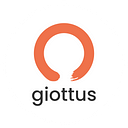What can you do by having a scanned repository of all human eyes? One, you can verify a person as a human. Given we are not yet in a race against AI or robots, what else can this be used for? Worldcoin wants its repository to be the enabler of future projects such as universal basic income, online voting or be the go-to digital passport that is borderless. Pretty lofty, yes. But, as an idea, there is some merit.
Co-founded by OpenAI’s Sam Altman, Worldcoin has already amassed more than 2 million users. WLD token is trading around $2.1 today. Coinciding with the launch of the Worldcoin Protocol, it launched the World ID system and expanded its WorldApp to over 80 countries — with plans to increase that number to 120. Currently, in India, there are 18 orbs available across Bengaluru, Haryana, New Delhi, Noida and Ghaziabad.
Today, we analyse the key aspects of the protocol and its WLD token.
1. Controversial tokenomics
Obviously, 2 million individuals have adopted Worldcoin as it benefits them in terms of WLD tokens. Is WLD tokenomics user centric? We are not sure.
In its latest launch, WLD allocation to insiders was increased from 20% to 25% according to Coindesk as the network was more “complex and costly” than imagined.
Of the 10 billion tokens in WLD total supply, only 143 million (~1%) are currently tradable. Of these, 43 million WLD are allocated to users who verified with the Orb during the pre-launch phase of the project. The remaining 100 million WLD have been loaned to 5 market makers with loans expiring in 3 months. Therefore, circulating supply is very low and artificially boosts the fully diluted valuation.
2. Market makers have an incentive to dump tokens
100 million WLD were loaned to market makers to make the coin liquid around launch (representing majority of current supply). These market makers can exercise an option to purchase the tokens at specific prices after the 3-month period. As per the contract, they have an incentive to sell if the price goes above $2.8 as they can re-buy at lower prices after 3 months.
3. Experts warn about privacy issues
Vitalik Buterin’s critique includes potential privacy leaks, misuse by governments of sensitive data, and the risk of eroding internet anonymity. The Orb is a hardware device, and there is no way to verify that it was constructed correctly and does not have backdoors. Hence, even if the software layer is perfect and fully decentralized, the credibility of the hardware devices remains a concern. He also compares biometric approaches with social-graph-based verification and suggests that a combination of all approaches could be beneficial.
ZachXBT, a popular blockchain investigator, posted on Twitter that fake accounts are getting sold in Telegram for as low as $1 and verification seems to be currently enforced only at the enrollment level, which is not effective and their initial user base may have been exploited people in developing countries.
4. Regulators have started taking notice
The project has already started garnering the attention of watchdogs globally. Britain’s data regulator (Information Commissioner Office) has suggested that it will examine Worldcoin and make further enquiries regarding the crypto project. Worldcoin’s Orb is currently unavailable in the US while its tokens can be traded in an open market.
Key takeaway
New ideas are often scoffed at the start. Worldcoin may have issues with its tokenomics but the idea is captivating — that users can be incentivised for storing their personal data on blockchains. If Governments can take up such an exercise, there can be a meaningful use of such aggregated data.
There are many use cases of blockchain that we are yet to discover — Worldcoin is one such initiative that will naturally evolve. However, we are not suggesting that you invest in or trade WLD — yet.
